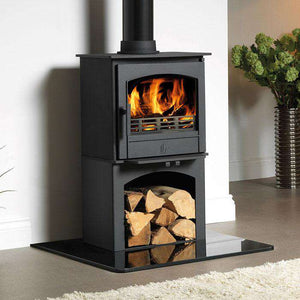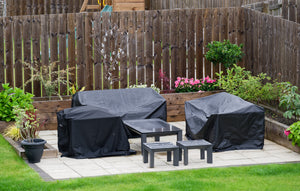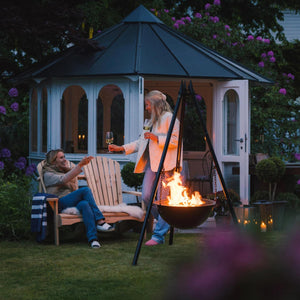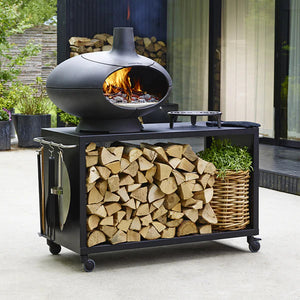Heating Up Your Home: The Ultimate Guide to Choosing the Perfect Log Burner with Stove Supermarket
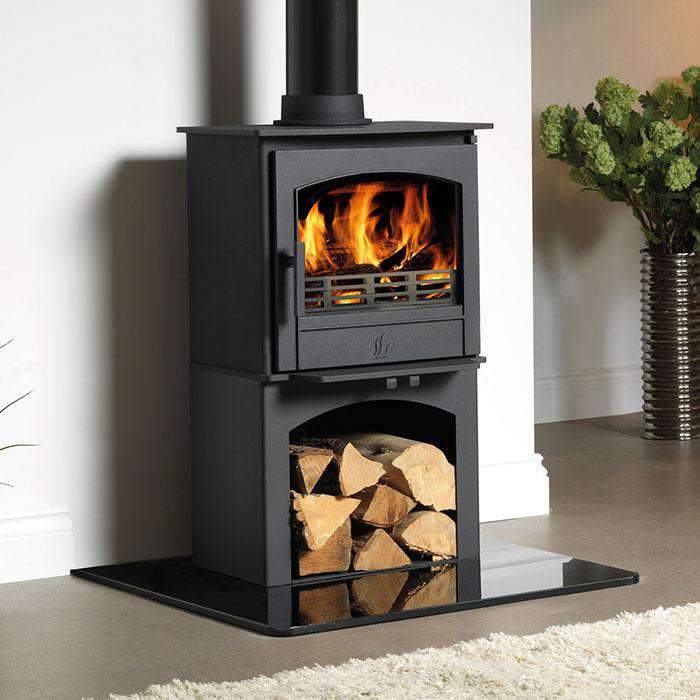
If you’re looking to enhance your home’s warmth and ambience, a log burning stove or wood burning stove could be the ideal solution. These stoves provide efficient, eco-friendly heating, along with the rustic charm of a live flame. With various sizes, styles, and features available, choosing the right one can be challenging. This guide will walk you through essential factors to consider so you can select the best stove for your home.
1. Understand How a Wood Burning Stove Works
Wood burning stoves are designed for high efficiency, converting most fuel into heat with minimal emissions. Here’s a simplified breakdown:
- Fuel Preparation and Loading: Stoves burn best with seasoned or kiln-dried logs containing less than 20% moisture. See our moisture readers here.
- Primary and Secondary Combustion: Many modern stoves offer secondary combustion, where gases and particles are reignited, improving efficiency and reducing emissions.
- Heat Distribution: Stoves use radiant and convection heat, warming your space efficiently.
By understanding how these systems work, you’ll be better equipped to choose a stove that suits your needs.
2. Choosing the Right Size Stove
Choosing a stove that’s appropriately sized for your space ensures efficient heating without overheating. Stoves are generally categorised by output:
- Small Stoves: Ideal for bedrooms or small spaces, producing around 3-5kW.
- Medium Stoves: Suitable for living rooms or open-plan areas, typically outputting 5-8kW.
- Large Stoves: Best for large, open spaces with high ceilings, offering over 8kW.
Tip: Calculate your room’s volume (in cubic meters) and adjust for insulation to estimate the kW requirement.
3. Heat Output and Efficiency
Heat output is measured in kilowatts (kW) and indicates the stove’s heating power. An undersized stove may struggle to heat a large space, while an oversized one could be inefficient. Consider the following factors:
- Room Size and Insulation: Well-insulated rooms may need less heat output. For uninsulated spaces, you may need a stove with a higher kW rating.
- Ecodesign Compliance: Look for Ecodesign stoves, which are designed for lower emissions and improved efficiency, meeting European standards.
4. Eco-Friendly Features
Environmentally conscious options include:
- DEFRA-Approved Stoves: Required in Smoke Control Areas, these stoves are designed for reduced emissions, allowing wood burning even in urban settings.
- ClearSkies Certification: Ratings of 1 to 5 indicate energy efficiency and emission levels, with higher ratings being more eco-friendly.
5. Stove Style and Aesthetic Considerations
Your wood burning stove can enhance your home’s aesthetic. From traditional cast-iron designs to sleek, contemporary styles, consider what best complements your decor:
- Traditional Stoves: Often made of cast iron with ornate detailing, perfect for rustic or classic interiors.
- Modern Stoves: Sleek, minimalist designs with large glass doors for enhanced flame visibility.
- Colour Options: Beyond classic black, consider earthy tones or bold colors for a unique look. Pastels and metallics are also available for those seeking a distinctive statement piece.
6. Practical Features to Consider
Modern stoves offer various features to enhance performance and ease of use:
- Airwash Systems: Keeps the glass clear, giving an uninterrupted view of the flames.
- Multi-Fuel Grates: Some stoves can burn both wood and smokeless fuel.
- Cleanburn and Triple-Burn Technology: Improves efficiency by burning off excess particles and gases.
- Built-In Log Stores: Handy for keeping logs close by and enhancing the stove’s aesthetic.
7. Stove Shape and Space Requirements
Wood burning stoves come in cylindrical or rectangular shapes, each with different spatial benefits:
- Cylindrical Stoves: Ideal for compact rooms due to their vertical, space-saving design.
- Rectangular Stoves: Often installed in existing fireplaces, they suit homes with traditional chimney setups.
8. Installation and Ventilation
Proper installation and ventilation are crucial for safe operation:
- Certified Installation: Hire a certified installer to ensure compliance with UK building regulations and safe operation.
- Flue Systems: Depending on your setup, you may need a flue liner or a twin-wall flue for proper ventilation.
- Air Supply: Well-insulated homes may require an additional air vent or direct air supply for combustion.
9. Maintenance Tips
Regular upkeep keeps your log burning stove safe and efficient:
- Chimney Sweeping: Have your chimney and flue cleaned regularly to prevent blockages and improve performance.
- Glass and Gasket Care: Regularly clean the glass door and check the door gasket to maintain a good seal.
- Fuel Quality: Always use dry, seasoned wood to reduce soot buildup and increase efficiency.
Conclusion
A log burning stove or wood burning stove can transform your home’s warmth, efficiency, and style. By understanding factors like size, heat output, eco-features, and aesthetic choices, you can find the perfect stove that aligns with both your heating needs and design preferences. With the right stove and maintenance, you’ll enjoy cozy, efficient warmth for years to come.
- Everpro Ltd


